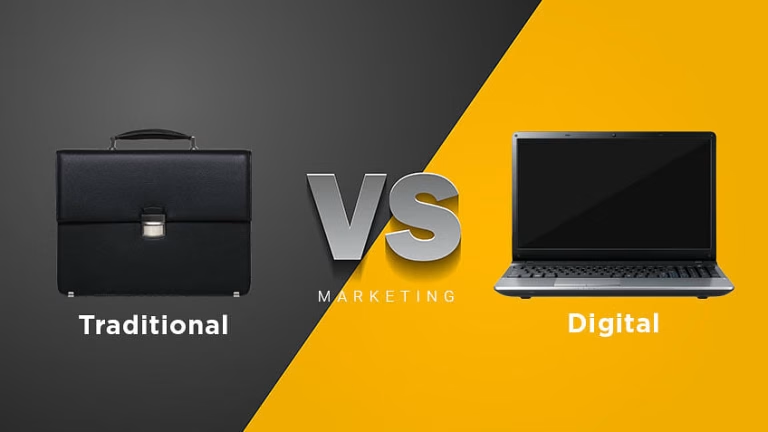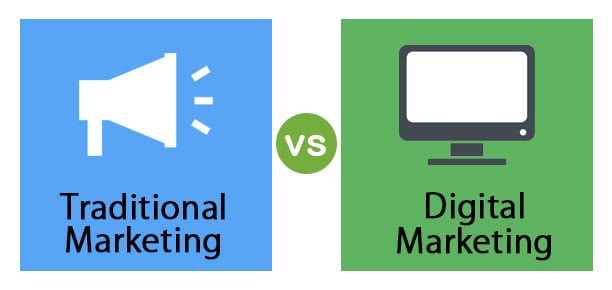Digital Marketing vs Traditional Marketing: Which Works Best in 2025

Discover the difference between digital marketing vs traditional marketing. Learn how the basics of social media marketing, sales funnel strategies, and content marketing drive growth in today’s competitive world.
Marketing has always been the bridge between businesses and customers. Traditionally, billboards, TV ads, radio spots, and newspapers dominated the landscape. But today, with the rise of the internet and smartphones, digital marketing is rewriting the rules. Understanding digital marketing vs traditional marketing helps brands choose the right strategy to reach, engage, and convert their audience.
What is Traditional Marketing?
Traditional marketing relies on offline channels such as:
- TV and radio advertising
- Print ads in newspapers and magazines
- Outdoor billboards and banners
- Flyers and brochures
- Direct mail campaigns
While these methods create strong brand awareness, they are often expensive, difficult to measure, and less personalized.
What is Digital Marketing?
Digital marketing uses online platforms and tools to reach potential customers. The most common channels include:
- Search engine optimization (SEO)
- Social media platforms (Facebook, Instagram, LinkedIn, TikTok)
- Email marketing campaigns
- Pay-per-click (PPC) advertising
- Content marketing and blogs
Unlike traditional methods, digital marketing allows businesses to track performance, target specific audiences, and optimize campaigns in real time.
Digital Marketing vs Traditional Marketing: Key Differences
FactorTraditional MarketingDigital Marketing
Reach
Local/NationalGlobal
Cost
HighFlexible (low to high)
Measurement
DifficultEasy with analytics
Targeting
Mass audienceNiche/Custom audience
Engagement
One-wayInteractive and two-way
Speed
Slow resultsInstant results
Why Digital Marketing Wins in 2025
- Measurable Results — Every click, view, or conversion can be tracked.
- Cost-Effective — Even startups with small budgets can compete with big brands.
- Customer Engagement — Social media allows real-time interaction.
- Global Reach — Breaks geographical limitations.
- Personalization — Sales funnel and automation tools nurture leads effectively.
Basics of Social Media Marketing
Social media platforms are no longer just for connecting with friends — they are powerful business tools. The basic of social media marketing includes:
- Building brand awareness through consistent posting
- Creating engaging content (videos, infographics, blogs)
- Running paid ads for targeted reach
- Monitoring analytics to understand audience behavior
Social media is often the first stage of the sales funnel , where you attract and engage leads.
The Role of Content Marketing
Content marketing is at the heart of digital marketing. By publishing valuable blogs, videos, case studies, and infographics, businesses can:
- Educate their audience
- Improve SEO ranking
- Build trust and authority
- Drive traffic into the sales funnel
Remember: content is not just about selling — it’s about solving problems for your audience.
Sales Funnel in Digital Marketing
The sales funnel guides customers from awareness to conversion:
- Awareness — Attract customers through SEO, ads, and social media.
- Interest — Share valuable content marketing to build trust.
- Decision — Offer promotions, free trials, or webinars.
- Action — Convert leads into paying customers.
Digital tools make it easy to automate and optimize each stage of this funnel.
Final Thoughts
When comparing digital marketing vs traditional marketing , both have their place. Traditional marketing builds broad awareness, while digital marketing — powered by social media, content marketing, and sales funnel strategies — delivers measurable, cost-effective, and targeted results.
In today’s fast-moving business world, embracing digital marketing is no longer optional — it’s the foundation for sustainable growth.

